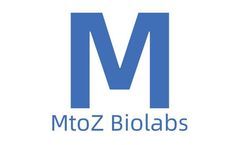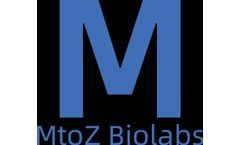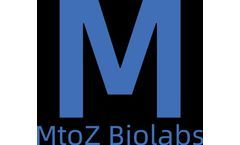Refine by
Drug Interaction Articles & Analysis
42 articles found
In biotechnology and agriculture, analyzing sterols can help in developing new drugs or engineering more resilient crops. Therefore, a robust Sterol Lipids Analysis service is an indispensable tool for researchers, clinicians, and drug developers. ...
This article explores the mechanisms, benefits, challenges, and future prospects of PEGylation in drug development. Mechanism of PEGylation PEGylation involves the covalent or non-covalent attachment of PEG—a synthetic, hydrophilic polymer—to a drug molecule. ...
This article delves into the application of nitrogen compounds in antibiotic research and development, illustrating how they influence antibiotic efficac Fundamental Properties of Nitrogen Compounds Nitrogen compounds are defined as chemical substances containing nitrogen atoms within their molecular structure. In drug chemistry, these compounds are renowned for their diverse ...
Conversely, low metabolic stability can lead to rapid clearance from the system, necessitating modifications in the chemical structure to enhance the drug’s longevity. Moreover, S9 assays help in predicting drug-drug interactions. Many drugs are metabolized by the same pathways; thus, understanding the ...
This diversity allows for the metabolism of a wide range of compounds, influencing the pharmacological effects and toxicity of drugs. Role in Drug Metabolism The role of cytochrome P450 in drug metabolism is two-fold: it can either detoxify drugs or convert them into active metabolites. The metabolic pathways involving CYP ...
Additionally, in silico screening techniques, such as molecular docking, have become invaluable tools in predicting how potential drugs may interact with nuclear receptors at a molecular level. These computational methods can significantly reduce the time and resources needed in the early stages of drug development. ...
Once absorbed, distribution takes place, dispersing the compound throughout the body and determining its interaction with target sites and off-target tissues. Metabolism, primarily occurring in the liver, transforms the drug into more water-soluble metabolites, facilitating its excretion via the kidneys or, in some cases, through bile. ...
AUC uses centrifugal force and centrifugation time to analyze the sedimentation behavior of molecules in the solution, which can provide important information about the structure, interactions, and purity of the drug. The specific applications of AUC in antibody drugs include:Purity and aggregation analysis of antibody ...
Therefore, the interaction of recombinant protein drugs with FcRn is a key parameter to be optimized and tracked throughout the development process of recombinant protein drugs.Surface Plasmon Resonance (SPR) technology can monitor the binding kinetics of recombinant protein with FcRn in real time, obtaining parameters such as binding affinity, binding constant, ...
Pharmacokinetic studies serve as the foundation for understanding the drug's bioavailability – the degree and rate at which an administered drug reaches the systemic circulation. An effective PK study offers invaluable insights into the required timing, dosage, route of administration, and potential drug interaction. Thus, ...
Furthermore, AI-driven platforms have the ability to streamline drug discovery and development processes, by simulating interactions between drugs and genetic targets, predicting potential side effects, and identifying optimal dosage regimens. ...
Protein-Protein Interaction Sequencing (PPI-Seq) is an emerging technology. Based on high-throughput sequencing, it allows researchers to explore protein interactions at the whole genome level.Technical PrinciplesThe basic principle of Protein-Protein Interaction Sequencing is to use the yeast two-hybrid system or mammalian cell lines to express ...
Furthermore, AI-driven platforms have the ability to streamline drug discovery and development processes, by simulating interactions between drugs and genetic targets, predicting potential side effects, and identifying optimal dosage regimens. ...
As sophisticated algorithms work their magic, predicting binding orientations and affinity scores, the intricate network of molecular interactions unfolds before our eyes. This dynamic interplay between computational algorithms and molecular models is the key to unlocking the mysteries that govern the interactions between drugs and protein ...
One critical element in the drug development process is drug metabolism and pharmacokinetics (DMPK), which refers to how a drug is absorbed, distributed, metabolized, and excreted (ADME) from the body. ...
By exploiting this phenomenon, MST enables the quantification of binding affinities, stoichiometry, and thermodynamic parameters of molecular interactions. Applications of Microscale Thermophoresis Drug Discovery and Development Microscale Thermophoresis plays a crucial role in drug discovery by providing insights into the binding affinity ...
The use of computer simulation for drug development may reduce costs and increase the efficiency and success rate of the drug development process. ...
Hepatocytes are the chief functional cells of the liver, responsible for the selective uptake, metabolism and excretion of most drugs. Cells for use in plate cultures or suspension assays represent a key tool for predicting properties such as hepatotoxicity, metabolism, and potential drug-drug interactions. Since these cells ...
This structure mimics the cell membrane, allowing liposomes to seamlessly interact with cells. Why add fluorescence? Traditionally, tracking the journey of drugs and nanoparticles in the body has been a challenge. ...
One critical element in the drug development process is drug metabolism and pharmacokinetics (DMPK), which refers to how a drug is absorbed, distributed, metabolized, and excreted (ADME) from the body. ...










